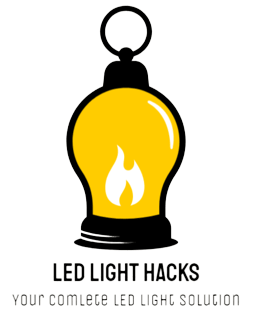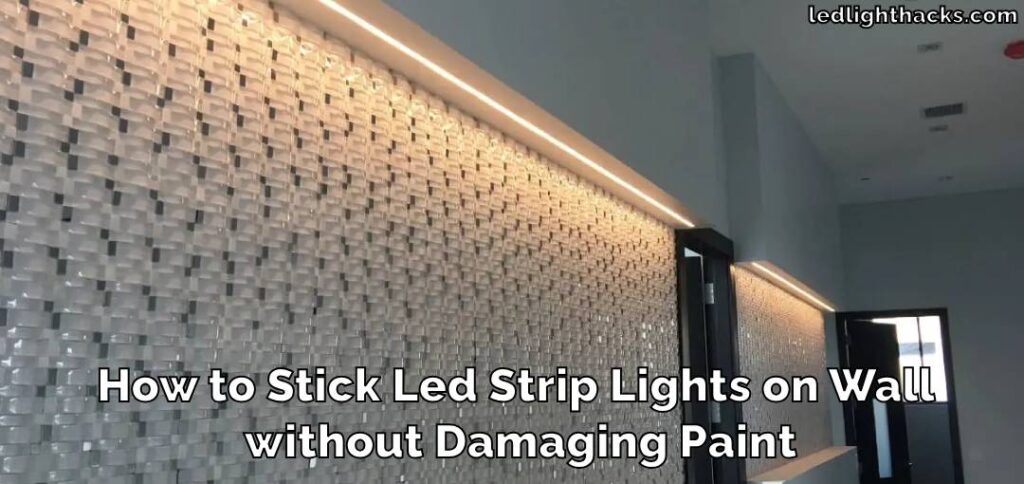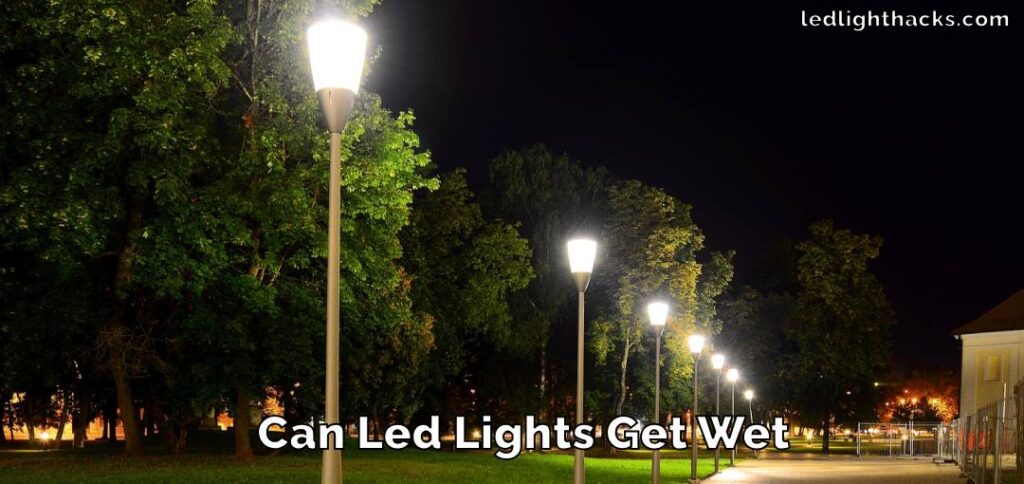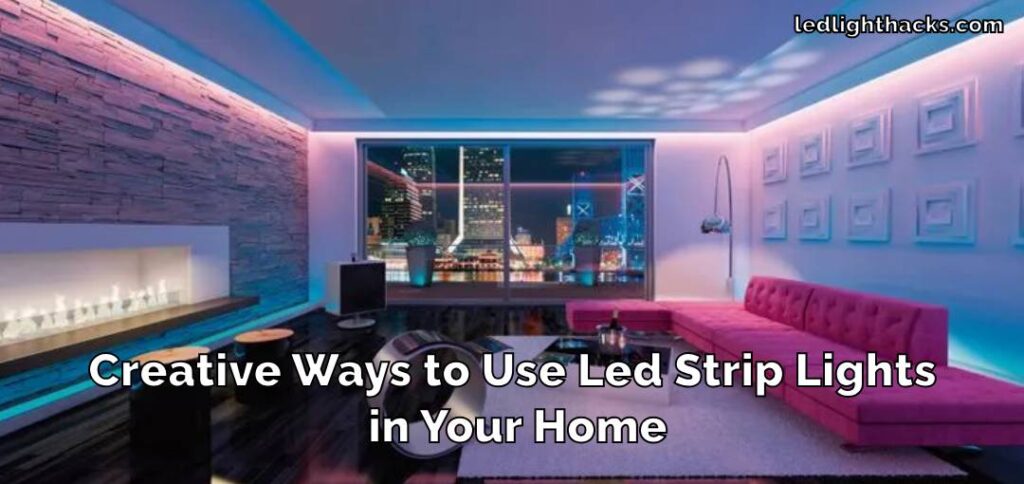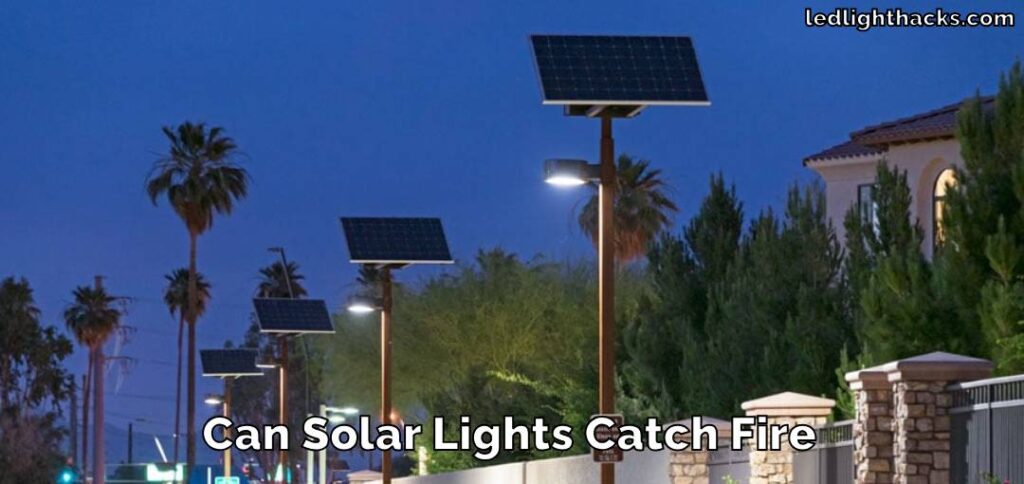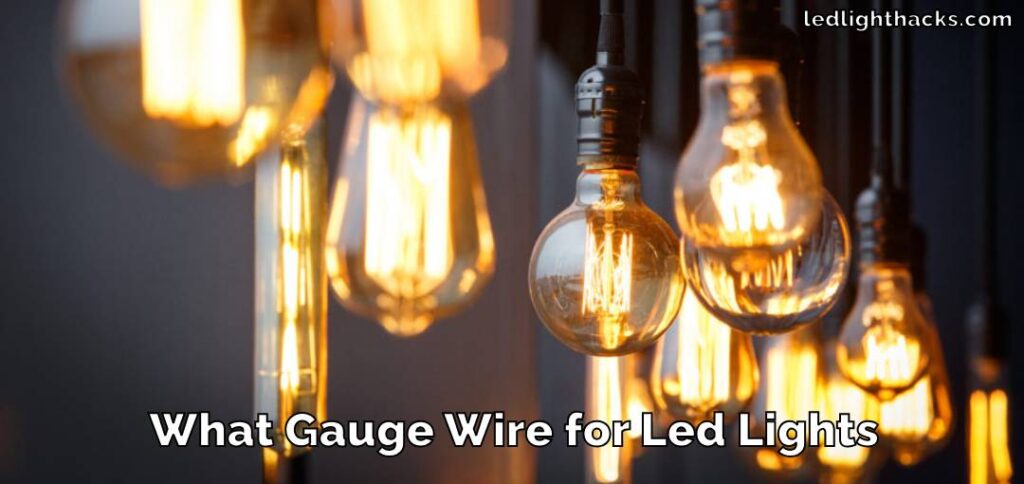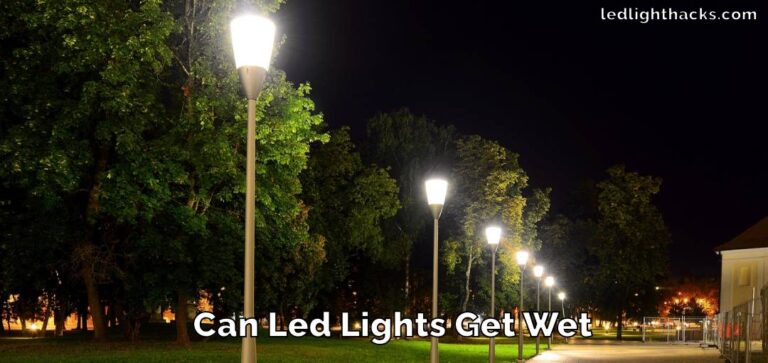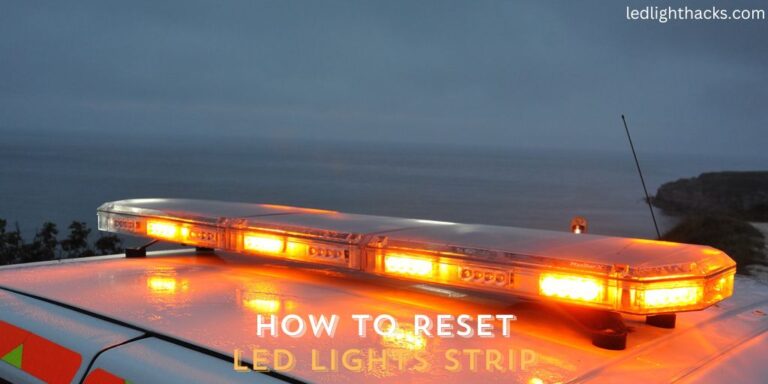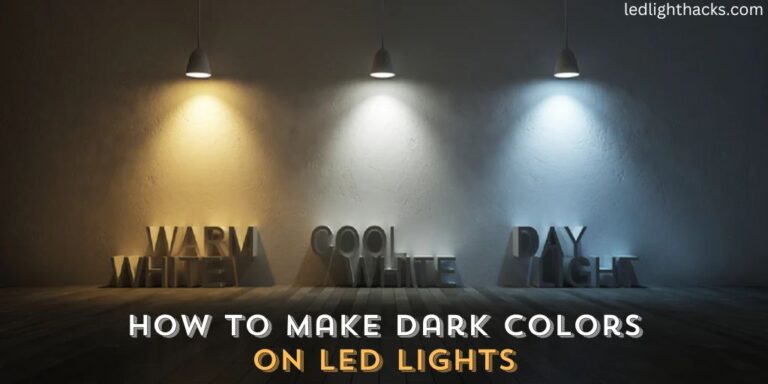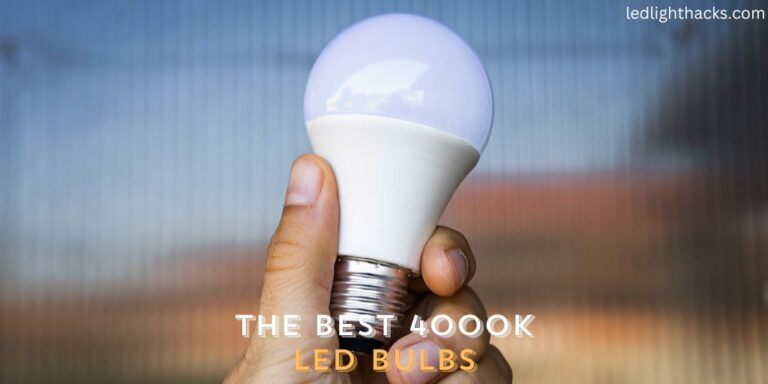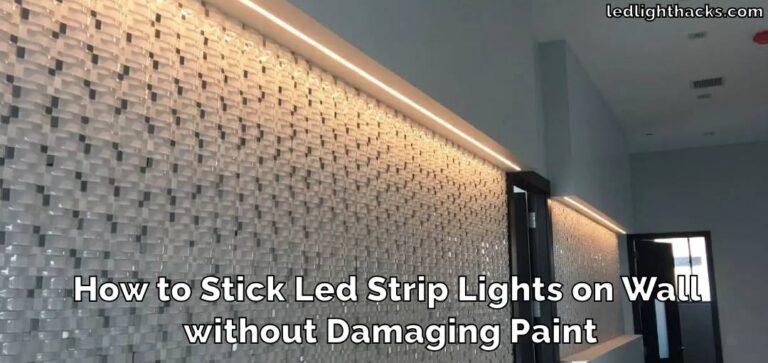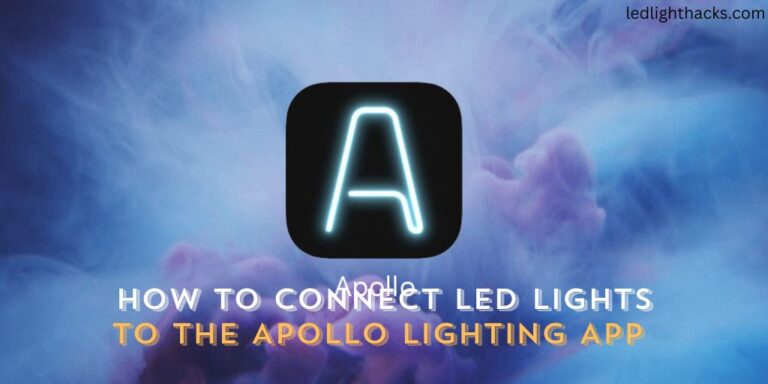How to Reduce Heat from Led Lights
LED lights have changed the place in how we light up our homes and offices. They’re known for being more efficient and lasting longer than old-school bulbs. But, there’s something not everyone talks about – the heat they give off. Sure, they’re cooler than traditional bulbs, but they still get warm, and managing that heat is key to keeping them working well for a long time.
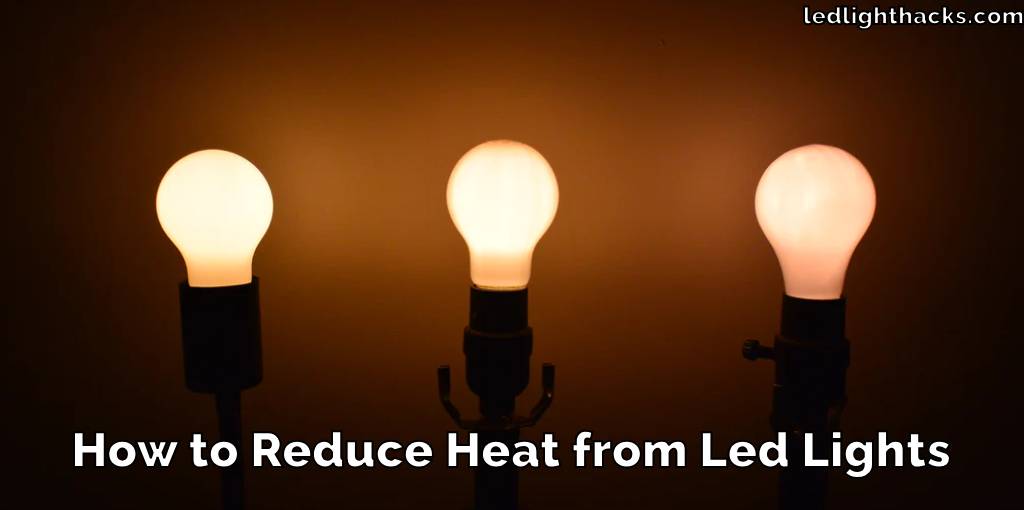
In this guide, we’re going to show you how to keep your LED lights cool. Lowering the heat from your LED lights is important because it helps them last longer and work better. Let’s dive into the best ways to do this, so you can enjoy efficient, long-lasting LED lighting in your space.
Why You Need to Reduce Heat from LED Lights
Reducing heat in LED lights is crucial for a variety of practical reasons. Excessive heat can significantly reduce the life of the LEDs, meaning they’ll need to be replaced more often. This not only becomes a hassle but also leads to more expenses over time.
When LEDs get too hot, their light quality also starts to suffer. You might notice changes in the brightness or color of the light, which can affect the atmosphere and functionality of the space they illuminate.
Furthermore, too much heat can create safety concerns. In confined spaces, like small rooms, or when the LEDs are used in tight fixtures, the heat might not have enough space to dissipate.
This can lead to overheating, which, in worst-case scenarios, could be a fire hazard. Therefore, keeping LEDs cool is about more than just making them last longer or work better it’s also about ensuring they are safe to use.
Moreover, consistent heat management in LED lights guarantees that their performance stays stable over time. Without proper heat control, the efficiency of LEDs can drop, leading to them consuming more power while providing less light.
This goes against one of the main reasons people choose LED lights: their energy efficiency. So, by controlling the heat, you’re not only saving on replacement costs but potentially on energy bills too.
Controlling the heat output of LED lights is essential for extending their lifespan, maintaining the quality of light, ensuring safety, and preserving their energy efficiency. It’s a straightforward yet critical aspect of getting the most out of your LED lighting solutions.
Tools We Need to Reduce Heat from LED Lights
When it comes to reducing heat from LED lights, having the right tools can make all the difference. These tools are not just for professionals even those with basic DIY skills can use them effectively.
The key is to understand what each tool does and how it contributes to better heat management in your LED lighting. Here’s a list of essential tools you’ll need:
- Heat sinks: These are attached directly to the LED to help disperse heat. Think of them as radiators for your LEDs. They take the heat away from the light and release it into the air.
- Thermal adhesive: This special kind of glue ensures that the heat sink sticks securely to the LED. It’s important because a firm bond means better heat transfer.
- Thermal grease: This substance is used to enhance the heat conduction between the LED and the heat sink. It fills in any tiny gaps, making sure that heat moves efficiently to the heat sink.
- Screwdriver and pliers: These common tools are used for installing and adjusting your LED setup. They’re handy for tightening connections and ensuring everything is properly in place.
Having these tools is a great start to managing the heat of your LED lights. Remember, effective heat reduction not only extends the life of your LEDs but also maintains their performance and safety. With these tools and a bit of know-how, you can keep your LED lights shining bright and cool for years to come.
How to Reduce Heat from LED Lights
Keeping your LED lights cool is super important for making sure they last a long time and work well. Luckily, there are some pretty straightforward ways you can help reduce the heat they give off. Here’s what you can do:
Install Heat Sinks
Heat sinks are your best friend when it comes to controlling LED heat. They take the heat away from the LED and let it out into the air. When choosing a heat sink, make sure it matches the size and shape of your LED.
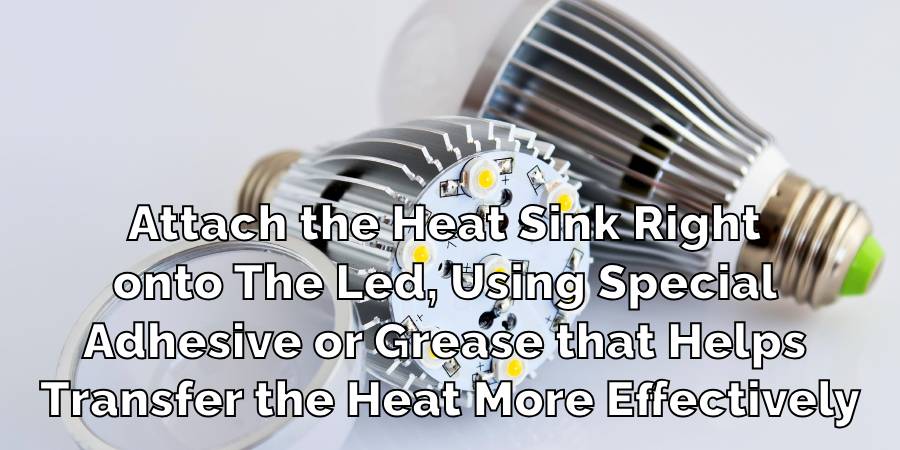
You usually stick the heat sink onto the LED with a special kind of glue or paste that’s really good at moving heat.
Improve Airflow
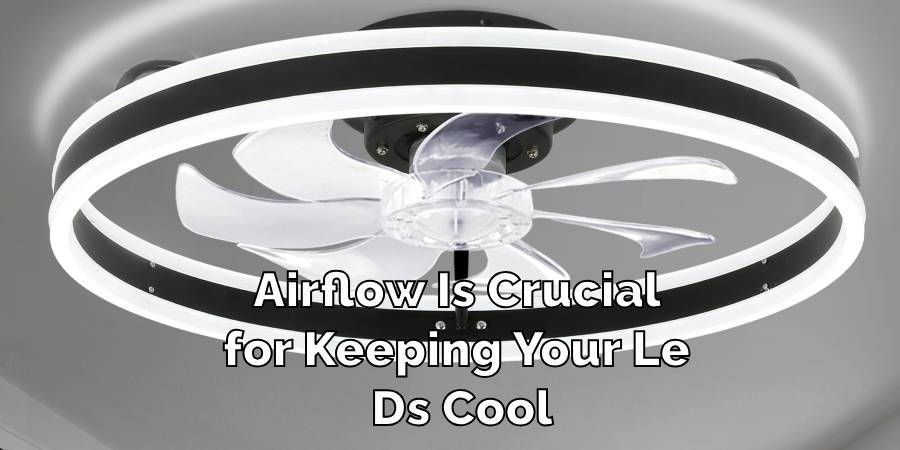
Making sure there’s enough air moving around your LED lights is key. Don’t put your LEDs in tight spots where air can’t get through. If you’re using a bunch of LEDs together, think about adding a fan or making vents to help get rid of the hot air.
Choose Quality LEDs
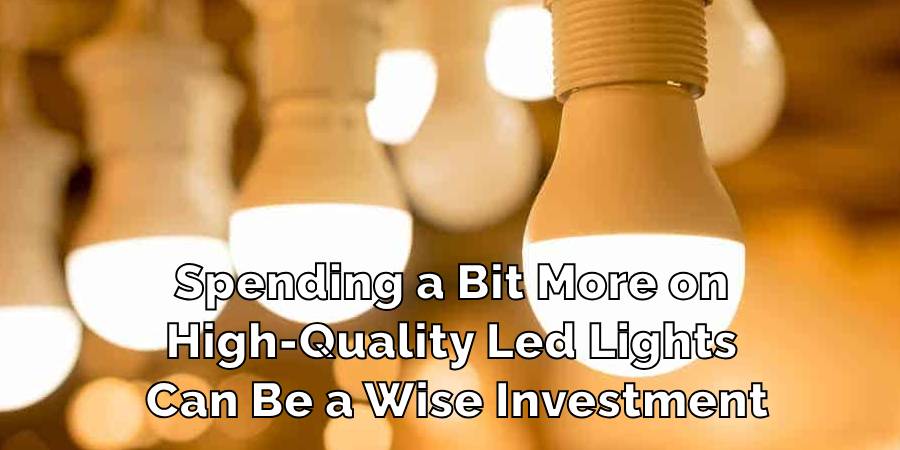
It might cost a bit more, but getting high-quality LED lights can save you trouble later. They’re often made better to handle heat, so they stay cooler and last longer.
Check Your Power Supply
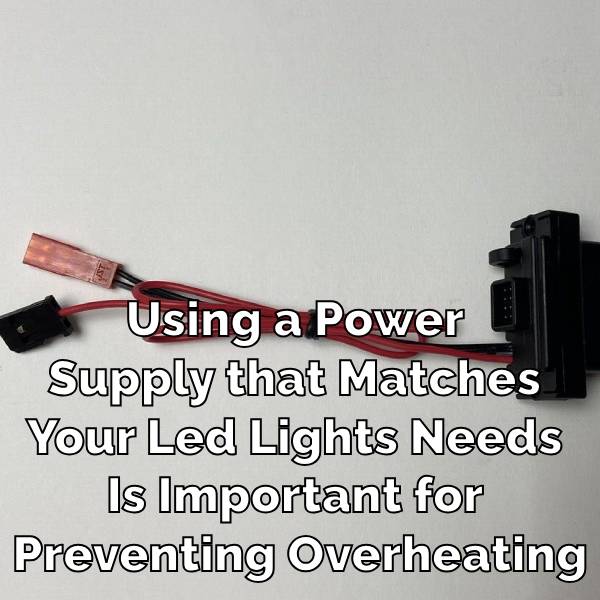
A power supply that’s too strong or unstable can make your LEDs heat up more than they should. Make sure you’re using a power supply that’s just right for your LEDs to keep them from getting too hot.
Keep Them Clean
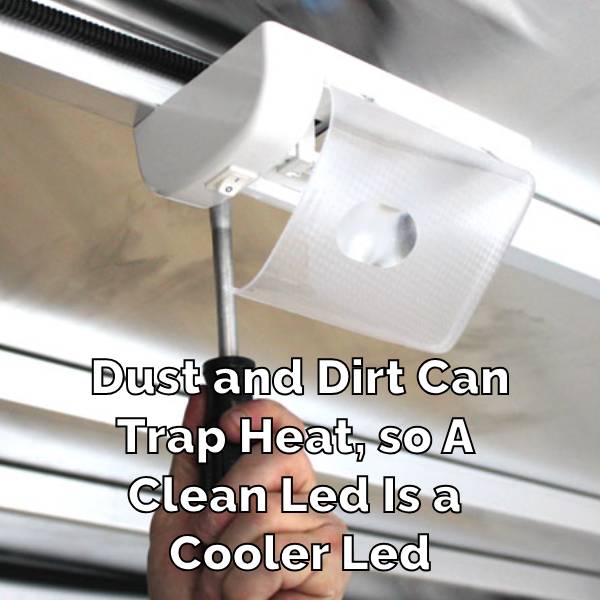
Dust and dirt can make things hotter by trapping heat. By keeping your LED lights and heat sinks clean, you help them stay cool.
By following these tips, you can help your LED lights stay cool, which means they’ll last longer and work better. Regular care and smart setup are the keys. With these steps, you can enjoy your LED lighting without worrying about them getting too hot.
Precaution While Reducing Heat from LED Lights
When it comes to managing the heat of LED lights, safety should always be your top priority. Electrical work, even something that seems as simple as handling LED lights, requires careful attention to avoid accidents. Here are some key precautions to keep in mind:
- Power Off: Before you start any work on your LED lights, make sure to turn off the power supply. This is crucial to prevent any electrical shocks or accidents. Even if you’re doing something small, it’s better to be safe and cut off the power first.
- Use Protective Gloves: Heat sinks in LED lights can get very hot, especially if they’ve been on for a while. When you’re handling them, wear gloves to protect your hands from burns.
- Follow the Manufacturer’s Instructions: Each LED light and fixture might have its own specific set-up or maintenance requirements. Always check the guidelines provided by the manufacturer. This ensures that you’re not only safe but also that you’re treating the equipment correctly.
- Avoid Overcrowding: When installing LED lights, give them enough space. Crowding too many lights together can restrict airflow, which is essential for keeping them cool. A well-arranged setup helps in better heat dissipation.
- Consult Professionals if Unsure: If you’re ever in doubt about how to handle the electrical aspects of your LED lights, don’t hesitate to reach out to a professional. It’s better to get expert help than to risk doing something wrong, which could lead to damage or safety hazards.
- Regular Checks: Regularly inspect your LED setups. Look for any signs of damage or overheating, such as discoloration or a burnt smell. Catching problems early can prevent safety issues.
- Proper Installation: Ensure that all components, especially heat sinks and wiring, are installed correctly and securely. Loose connections can be hazardous and also affect the performance of your LED lights.
By following these simple yet important safety precautions, you can effectively reduce the heat from your LED lights while ensuring that you, your space, and your equipment stay safe. Remember, safety is always the first step in any kind of electrical work.
FAQ’s
How Do You Cool LED Lights?
To cool down LED lights, the main strategy is to use heat sinks. These devices attach to your LEDs and work like a charm to pull away the heat. Another important factor is ensuring there’s enough air moving around your lights. If they’re in a cramped space, they won’t be able to cool off properly.
Also, be mindful of the power you’re feeding into your LEDs. Too much power can make them hotter than they should be. It’s like giving them more work than they can handle, which leads to overheating. So, a good balance of the right power, heat sinks, and air space is key to keeping your LEDs cool.
Why Is My LED Light So Hot?
There are a few reasons why your LED light might be getting too hot. One common cause is that the heat isn’t being moved away from the light effectively. This can happen if your heat sink isn’t working properly or if there’s not enough air movement around the light. Another reason could be the quality of your LED light.
Cheaper or lower-quality LEDs might not be designed to handle heat well. Also, if you’re giving your LED more power than it’s designed for, it will naturally heat up. This is like pushing a car to go faster than its limit it puts a strain on the engine, or in this case, the LED.
How Do You Protect LEDs from Heat?
Protecting your LEDs from heat starts with choosing the right ones. Go for LEDs that are known for good heat management. Once you’ve got them, make sure they’re installed correctly. This includes attaching heat sinks properly and ensuring that there’s enough room around the LEDs for air to flow. Regular cleaning is also important.
Dust and grime can cover your LEDs and heat sinks, making them less efficient at getting rid of heat. Lastly, watch the power supply. Giving your LEDs the right amount of power, not too much or too little helps in keeping them at the right temperature.
Do LED Lights Give Off Much Heat?
LED lights do create some heat, but it’s a lot less than what you get from old-school incandescent bulbs. This is one of the reasons why LEDs are more energy-efficient – they turn more of their energy into light instead of wasting it as heat. But that doesn’t mean the heat they do produce should be ignored.
Even a small amount of heat, if not managed well, can affect an LED’s performance and shorten its life. It’s like how even a little bit of continuous stress can wear something down over time. So, while LEDs are cooler, keeping an eye on the heat they generate is still important for making them last longer and work better.
Do LED Lights Need Cooling?
Yes, LED lights need some form of cooling to work their best. They might not get as hot as traditional bulbs, but they still get warm enough that without cooling, they could have problems. The most common way to cool LEDs is by using passive methods.
This means using things like heat sinks, which are materials that absorb and spread out the heat, and making sure there’s enough air moving around the lights. Think of it like giving your LED lights a little bit of breathing room. Proper cooling helps ensure that your LEDs shine brightly and last a long time, making them a smart choice for lighting up your space.
Conclusion
Managing the heat of LED lights effectively is key to getting the most out of them. When you take the right steps to control the heat, you’re not just making your LED lights last longer, but you’re also ensuring they work at their best.
Heat can be a big enemy to the performance and lifespan of LEDs. By using tools like heat sinks, ensuring good airflow, and choosing quality LEDs, you can keep this heat in check.
This isn’t just about saving money on replacements or enjoying better lighting. It’s also about safety. Overheated LEDs can be a hazard, so keeping them cool is a smart move. Remember, caring for your LEDs means more than just flicking a switch.
It’s about being mindful of how they’re set up and maintained. In the long run, this extra attention pays off, giving you efficient, reliable, and safe lighting. So, think of heat management as an essential part of using LED lights. It’s a simple practice that makes a big difference.
Read Also- How Many Feet Of LED Strip Lights Do I Need For My Room
How to Change a Light Switch without Turning Off the Power
Mastering the skill of changing a light switch without turning off the power holds great…
How To Stick LED Strip Lights On Wall Without Damaging Paint
LED light strips have surged in popularity, adorning homes and spaces with their vibrant colors…
Can Led Lights Get Wet
LED lights are everywhere, from homes to city streets, known for their efficiency and brightness….
Creative Ways to Use LED Strip Lights in Your Home
LED strip lights, those brilliant strips of technology, serve as a beacon of innovation in…
Can Solar Lights Catch Fire
Solar garden lights are your go-to pal for lighting up your backyard oasis while keeping…
What gauge wire for LED lights
When diving into LED lighting, one aspect that might not catch your eye at first…
